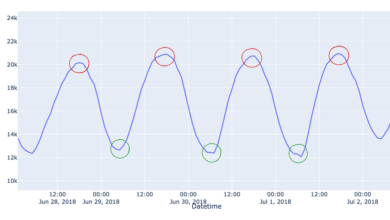How extraordinary insights are gleaned from pharma data

In pharmaceutical manufacturing and processing today, professionals use sophisticated equipment to track and report data collected while measuring and testing raw materials, in-process components, and finished products.
However, many organisations struggle to efficiently gather, monitor, and analyse the vast amount of information they accumulate. The lack of a more comprehensive and global approach hinders the effective utilisation of data analytics to derive valuable insights from raw data. The result is often missed opportunities to make strategic decisions, enhance performance, increase productivity, and ultimately improve profitability.
According to Peter Sondergaard, senior vice president and global head of research at Gartner, “Information is the oil of the 21st century, and analytics is the combustion engine. Just like oil, data has tremendous potential value but only when it is effectively gathered and utilised.”
However, with all the materials, instruments, and applications involved in modern pharmaceutical manufacturing, it can be challenging to capture, track, assess, and effectively use the flood of data that is generated on a timely basis. According to the Forbes article Big Data: 20 Mind-Boggling Facts Everyone Must Read, “At the moment less than 0.5% of all data is ever analysed and used.”
Now industry innovation is helping pharmaceutical manufacturers gain key insights into their products and processes by enabling them to effectively interpret data from every test given, even at mass volumes.
“Having access to tools that allow you to automatically store, track, and analyse the information gathered [from test instruments] can help processors unlock potential value from their ideas, processes, and products. This kind of analysis means users can take logs of test results and let the data “speak for itself” to help engineers and management recognize patterns and draw accurate conclusions. In some cases, the data analysis may help them make accurate predictions to drive future growth,” says John Bogart, managing director of Kett US, a manufacturer of a full range of moisture and organic composition analysers.
According to Bogart, effective data tracking and analysis offers significant benefits to many areas within pharmaceutical manufacturing from R&D, process engineering, and plant management to quality assurance, maintenance, corporate management, and even regulatory compliance.
The Many Benefits of Data Tracking
For pharmaceutical manufacturers, implementing an effective data tracking system can be crucial to maintaining quality assurance and ensuring optimal results for a product or process. For example, it can reduce or eliminate measurement or labeling errors at every phase of the process. This can help to ensure safety, which is particularly important in fields like pharmaceuticals where precision is critical.
Logging and analysing data can provide much needed transparency for quality assurance; data tracking streamlines auditing by providing a definitive means to examine quality and workflow analysis; and ongoing tracking can help to pinpoint exactly where an issue arises, making it easier to investigate and address any manufacturing problems. In addition, tracking and analysing data can also identify important patterns and trends in testing.
“Being able to automatically and effortlessly log data not only means you can review information from previous tests, but also analyse the data, draw conclusions, and make informed decisions for the future rather than merely reacting to problems as they occur,” says Bogart.
Data Tracking and Analysis Simplified
To help pharmaceutical manufacturers attain the utmost value from their data, OEMs have developed a new generation of software to streamline the collection and analysis of production measurement data.
As an example, Kett has introduced its Tracker System, a data collection and analysis software solution that gives organisations the ability to monitor, synthesise, display, and report information from manufacturing related measurement devices over time. This can include, for instance, factors such as the moisture measurement or organic composition analysis of everything from raw inputs to finished products.
The system is comprised of a collection of software programs that allow processors to log and analyse data they collect on each device. The single analyser version is a database with display and output functions for a single Kett measurement device. Using multiple analysers gives users the ability to simultaneously collect, display, monitor, and send out data from several devices all in one place.
A positioning module allows users to add location data for instrument readings and other measurements. This enables integration of the information with linear actuators and/or robotics, which can facilitate making real-time adjustments in production equipment as required to improve quality or efficiency.
The Tracker Software allows integrating data collection tables and graphs as needed from non-Kett devices, making the system a one-stop-shop for manufacturing data collection and analysis, according to the company. The system provides modules for distributed data management so multiple authorised users can view, analyse, manage, and send out process control management data simultaneously.
“The Tracker System is designed to serve as a single collection point for data and analysis that can be applied across all sectors and industries,” says Bogart.
The data tracking and analysis system delivers even more value for manufacturers when used in conjunction with smart measurement devices. On the production floor, ‘smart’ equates to the ability to continually monitor conditions such as product and input moisture content in real-time to optimise quality. Assessing proper moisture level in products and processes is essential for many reasons such as meeting regulatory standards, ensuring proper chemical reactions and drying, maximising shelf life and deterring mold, as well as increasing selling price and decreasing shipping cost.
One example is Kett’s KB30 in-line NIR moisture meter system. With a response time of 0.2 seconds, +/- 0.01% accuracy, and a moisture measurement range of 0.00-100.0%, the device can be used to assess extremely variable and rapidly changing products, as well as processes where quality is critical. The quick response time enables faster production line rates with superior moisture measurement. It has been used in various industrial production lines to test pharmaceuticals, chemicals, foods, textiles, minerals, lubricants, pulp/paper goods, and personal care products.
According to Bogart, the technology is “smart” because all of the calculations are performed inside the sensor and measurements are sent on a 24/7 basis to smartphones, PCs, and other devices without having to be directly connected. If desired, these instruments can prompt operators and managers with alerts as needed.
When the smart device’s monitoring capabilities are integrated with accompanying Kett Tracker data collection and analysis software, improved error detection, defect analysis, and product quality result.
“With all these meticulous readings and with every instrument geared toward accuracy in every moment, comes a great deal of data,” explains Bogart. “It only makes sense to provide a place to store, track, and analyse all this information. This is a wealth of information that’s right at their fingertips, and the right lens can unlock it.”
As an example, when two smart sensors were used to run different production lines at a manufacturer, the devices’ real-time capability detected periodic, wildly fluctuating moisture values that caused their extrusion process to go out of control. After investigation, it was determined that the manufacturer’s electrical circuits had not been adequately isolated from the effects of a nearby power plant’s operation on shared power lines.
As more industries and sectors look to improve their processes and inform their decisions, effectively collecting and analysing data will become even more critical. Pharmaceutical manufacturers that take advantage of the latest tools to track and analyse their data will not only improve their production quality and efficiency but also position themselves for growth in the future.



